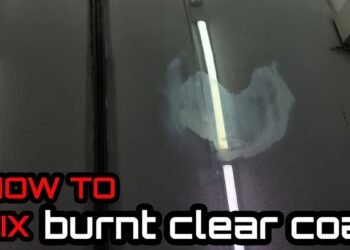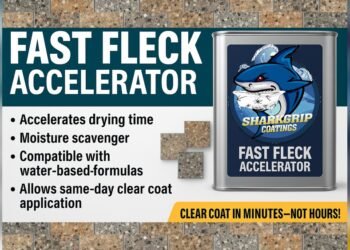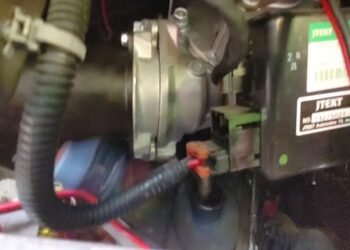If you’re working on a metal surface and wondering whether polyester primer is the right choice to apply directly over bare metal, you’re not alone. Getting the primer step right is crucial—it can make or break the durability and finish of your project.
You want a primer that sticks well, protects against rust, and creates a solid base for paint. But here’s the catch: not all polyester primers are designed for bare metal, and using the wrong product could lead to peeling, corrosion, or extra work down the road.
You’ll discover what polyester primer really does on bare metal, when it works best, and what alternatives might serve your project better. Keep reading to learn how to protect your metal surface the right way and avoid costly mistakes.
Choosing The Right Primer
Choosing the right primer is crucial for a durable and smooth finish on bare metal. The primer acts as a protective layer, stopping rust and helping paint stick better. Different primers serve different needs. Understanding their features helps pick the best one for your project.
Epoxy Primer Benefits
Epoxy primer offers strong corrosion protection. It seals the metal surface fully, blocking moisture and air. This prevents rust from forming under the paint. It sticks well to bare metal, old paint, and fillers. Epoxy primer creates a solid base for long-lasting paint jobs. It works great for restorations and projects needing extra durability. One downside is it can be hard to sand. Also, it must be covered with a topcoat to avoid fading from sunlight.
Self-etching Primer Features
Self-etching primer contains mild acid to clean the metal surface chemically. This creates a rough texture for better paint adhesion. It dries quickly, speeding up the project timeline. This primer is ideal before applying body filler or high-build primer. It provides good rust resistance but is best for shorter-term protection. It is easier to sand than epoxy primer. Self-etching primer works well for fast repairs and repainting jobs.
Polyester Primer Limitations
Polyester primers do not bond well directly to bare metal. They work better over existing primers or filler. Applying polyester primer on bare metal can cause adhesion problems. This may lead to peeling or rust under the paint. Polyester primer mainly adds thickness and helps smooth surfaces. It lacks strong corrosion resistance compared to epoxy or self-etching primers. Use polyester primer only after sealing the metal with a proper primer.
Preparing Bare Metal
Preparing bare metal properly is essential before applying polyester primer. The metal must be clean, smooth, and free of contaminants. This ensures the primer sticks well and protects against rust. Skipping these steps can cause peeling and corrosion later.
Cleaning And Degreasing
Start by removing dirt, oil, and grease from the metal surface. Use a degreaser or a mix of soap and water. Wipe the surface with a clean cloth to remove all residues. A clean surface helps the primer bond better and lasts longer.
Surface Sanding Techniques
Sanding creates a rough texture for the primer to grip. Use fine-grit sandpaper or a sanding block. Sand in a circular motion to cover the entire area evenly. Avoid sanding too hard to prevent damage to the metal. Proper sanding improves primer adhesion and smoothens imperfections.
Removing Rust And Contaminants
Rust weakens the metal and stops primer from sticking well. Use a wire brush or sandpaper to remove rust completely. For stubborn rust, apply a rust remover or converter. Clean the surface again after rust removal. A rust-free surface ensures long-lasting protection from the primer.
Applying Epoxy Primer
Applying epoxy primer over bare metal is a crucial step in automotive painting. It forms a strong, protective layer that prevents rust. Epoxy primer bonds well to metal surfaces, ensuring durability. This primer also seals the metal to stop moisture from causing corrosion. Proper application guarantees a smooth base for polyester primer and paint layers.
Mixing And Tools Needed
Mix epoxy primer carefully according to the instructions. Use the correct ratio of resin to hardener. Stir the mixture thoroughly but gently to avoid bubbles. Gather tools like a spray gun, air compressor, and protective gear. Clean the spray gun before use to prevent clogs. Proper tools help achieve a smooth, even coat.
Spray Techniques For Even Coverage
Hold the spray gun about 6 to 8 inches from the metal surface. Move the gun steadily in straight lines, overlapping each pass slightly. Avoid spraying too thick or too thin layers. Keep a consistent speed to prevent runs and uneven spots. Multiple thin coats work better than one heavy coat. Let each layer flash off before applying the next.
Drying And Curing Times
Allow epoxy primer to dry at room temperature for 20 to 30 minutes. Full curing may take several hours to overnight, depending on product and conditions. Avoid sanding or painting until the primer cures completely. Follow manufacturer guidelines for best results. Proper curing ensures strong adhesion and corrosion resistance.

Credit: www.eastwood.com
Using Self-etching Primer
Using self-etching primer is a common step when working with polyester primer over bare metal. This primer type contains a mild acid that helps the primer stick better to the metal surface. It creates a rough texture on the metal, improving adhesion and preventing rust. Self-etching primer is faster drying and works well before applying body filler or polyester primer.
Surface Etching Process
The surface etching process starts by cleaning the bare metal thoroughly. Remove all dirt, grease, and rust for best results. Apply the self-etching primer in thin, even coats. The acid in the primer lightly eats into the metal surface. This creates tiny grooves that help the next layers stick better. Allow the primer to dry fully before sanding or applying filler.
Application Tips
Shake the primer container well before use. Spray from about 6 to 8 inches away for even coverage. Avoid heavy coats that can run or drip. Let each coat dry before adding the next one. Use a respirator and work in a well-ventilated area. After drying, sand the primer lightly to smooth the surface. This step ensures better adhesion of polyester primer or filler.
When To Use Before Body Filler
Use self-etching primer before body filler on bare metal parts. It seals the metal and prevents rust under the filler. The primer’s texture helps the filler stick well and stay in place. Skip this step only if the metal is already sealed or painted. Using self-etching primer first improves the durability of the repair.
Polyester Primer Over Bare Metal
Applying polyester primer over bare metal requires careful attention. Bare metal surfaces are prone to rust and corrosion. Polyester primers add thickness and help smooth imperfections. They are not designed to stick directly to bare metal without preparation.
Using polyester primer on bare metal alone can cause adhesion problems. It works best over a properly treated surface. Understanding how to layer and combine primers ensures a strong, durable finish.
Adhesion Challenges
Polyester primers often have poor adhesion on bare metal. The smooth metal surface lacks the texture needed for the primer to grip. Metal also reacts with moisture and air, causing rust under the primer. This weakens the bond and leads to peeling or flaking. Proper cleaning and surface treatment are essential. Without these steps, the polyester primer may fail quickly.
Best Practices For Layering
Start with a primer made for bare metal, like epoxy or self-etching primer. These seal the metal and prevent rust. After the base primer cures, apply the polyester primer for added build and smoothness. Sand the polyester primer between coats for a flat surface. This layering creates a strong bond and a smooth finish ready for paint.
Combining With Direct-to-metal Primers
Use direct-to-metal primers first for corrosion protection. Epoxy primers are ideal for this. They seal the metal and provide excellent adhesion. Follow with polyester primer to build thickness and fill minor flaws. This combination maximizes durability and surface quality. Avoid using polyester primer alone on bare metal to prevent adhesion issues.
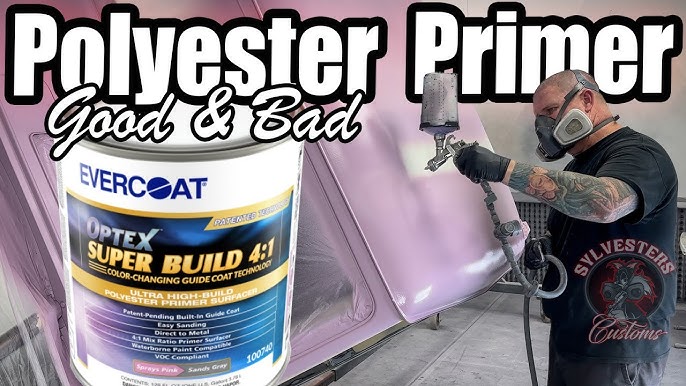
Credit: www.youtube.com
Sanding And Refinishing
Sanding and refinishing are essential steps when applying polyester primer over bare metal. Proper sanding smooths the surface, ensuring the primer adheres well and creates a perfect base for paint. Refinishing helps remove any flaws and prepares the surface for a flawless topcoat. These steps improve durability and the overall look of your project.
Sanding Between Primer Layers
After applying the first coat of polyester primer, allow it to dry completely. Sand it lightly using fine-grit sandpaper. This removes any rough spots or dust particles. Sanding between layers helps the next coat stick better and creates an even surface. Repeat the process for each primer layer for the best results.
Spotting Imperfections
Inspect the surface carefully after sanding. Look for scratches, bumps, or uneven areas. Use a bright light to spot imperfections clearly. Fix any flaws by applying a thin filler or another primer coat. Smooth the area again with fine sandpaper. This step ensures your surface is perfect before painting.
Preparing For Topcoat
Once the final primer layer is smooth and dry, clean the surface thoroughly. Use a tack cloth to remove dust and debris. Make sure the surface is dry and free of oils or grease. Proper preparation helps the topcoat adhere better and last longer. Now, your bare metal is ready for a strong, beautiful finish.
Common Mistakes To Avoid
Applying polyester primer over bare metal can be tricky. Avoiding common mistakes ensures a smooth, lasting finish. These errors often cause peeling, rust, or poor adhesion. Knowing what to avoid saves time and effort.
Skipping Surface Prep
Surface preparation is crucial before applying polyester primer. Bare metal must be clean and free from rust, oil, or dirt. Skipping this step leads to weak primer adhesion. It also causes bubbling or flaking later. Use a degreaser and sand the metal lightly for best results.
Incorrect Primer Choice
Not all primers work well on bare metal. Polyester primers are high build but may lack corrosion resistance alone. Choose an epoxy or self-etching primer first to seal and protect the metal. Then apply polyester primer for a smooth finish. Using polyester primer directly on metal may fail over time.
Ignoring Drying Times
Each primer needs proper drying time before the next layer. Rushing this process traps solvents and moisture under the paint. This causes bubbles and weak bonding. Follow the manufacturer’s recommended drying time carefully. Patience ensures a strong and even surface for painting.
Tips For Long-term Protection
Protecting bare metal with polyester primer requires careful steps for lasting results. Proper sealing and topcoating prevent moisture and contaminants from reaching the metal surface. UV rays can degrade the primer and metal if left exposed. Regular maintenance keeps the protection intact and extends the life of the metal underneath.
Sealing And Topcoating
Apply a high-quality sealer over the polyester primer. This seals tiny pores and creates a smooth surface. Use a topcoat designed for metal protection. It adds an extra barrier against rust and corrosion. Always follow manufacturer instructions for drying times. Proper curing ensures the coatings bond well and last longer.
Uv Protection Strategies
Polyester primers do not resist UV rays well. Use a UV-resistant topcoat to shield the primer and metal. Choose coatings with UV inhibitors for best results. Park vehicles or metal objects in shaded areas when possible. This reduces direct sun exposure and slows primer breakdown.
Maintenance For Bare Metal Areas
Inspect metal surfaces regularly for chips or scratches. Touch up damaged spots quickly to prevent rust. Clean surfaces gently to avoid removing protective layers. Use mild detergents and soft cloths to wipe off dirt and grime. Keep drainage points clear to avoid water pooling on metal parts.
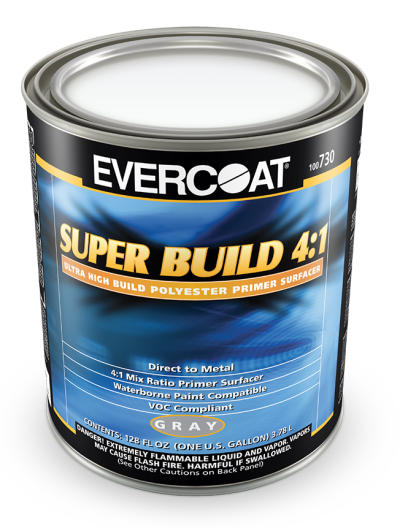
Credit: www.evercoat.com
Frequently Asked Questions
Can You Use Polyester Primer On Bare Metal?
Polyester primer can adhere to some bare metals but performs poorly alone. Use epoxy or self-etching primer first for better adhesion and corrosion protection before applying polyester primer.
What Is The Best Primer To Put On Bare Metal?
The best primer for bare metal is epoxy primer for superior corrosion protection and adhesion. Self-etching primer works well for quick repairs and body filler application. Choose epoxy for long-term projects and self-etching for faster, process-focused work. Both seal and protect bare metal effectively.
When To Use Polyester Primer?
Use polyester primer over bare metal only after applying a dedicated metal primer like epoxy or self-etching primer. Polyester primer builds thickness and smoothness but lacks direct metal adhesion and corrosion protection. Apply it when you need a high-build layer before sanding and painting.
Will Primer Stick To Bare Metal?
Yes, primer can stick to bare metal. Use epoxy or self-etching primers for better adhesion and corrosion protection.
Can Polyester Primer Be Applied Directly On Bare Metal?
Yes, some polyester primers stick to bare metal but may not protect well against rust.
Conclusion
Polyester primer can work over bare metal, but choose carefully. Use a dedicated metal primer first for better protection. Epoxy or self-etching primers seal metal and prevent rust well. Then apply polyester primer for smooth, high-build coverage. This two-step process improves adhesion and durability.
Skipping the metal primer risks poor bonding and corrosion. Taking time to prep metal right leads to a stronger, longer-lasting finish. Your project will look better and stay protected. Simple steps make all the difference in metal priming success.



